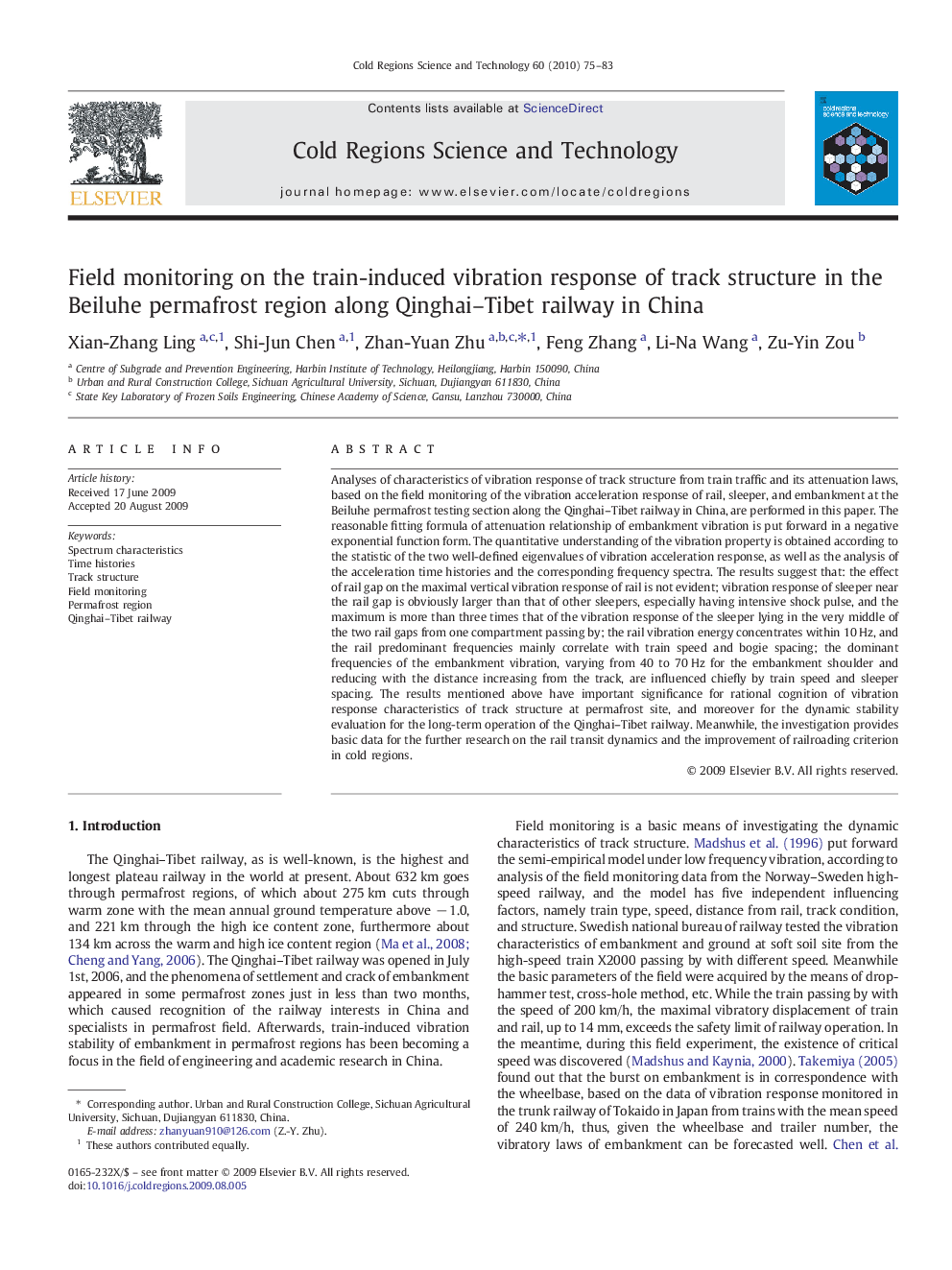| Article ID | Journal | Published Year | Pages | File Type |
|---|---|---|---|---|
| 4676380 | Cold Regions Science and Technology | 2010 | 9 Pages |
Analyses of characteristics of vibration response of track structure from train traffic and its attenuation laws, based on the field monitoring of the vibration acceleration response of rail, sleeper, and embankment at the Beiluhe permafrost testing section along the Qinghai–Tibet railway in China, are performed in this paper. The reasonable fitting formula of attenuation relationship of embankment vibration is put forward in a negative exponential function form. The quantitative understanding of the vibration property is obtained according to the statistic of the two well-defined eigenvalues of vibration acceleration response, as well as the analysis of the acceleration time histories and the corresponding frequency spectra. The results suggest that: the effect of rail gap on the maximal vertical vibration response of rail is not evident; vibration response of sleeper near the rail gap is obviously larger than that of other sleepers, especially having intensive shock pulse, and the maximum is more than three times that of the vibration response of the sleeper lying in the very middle of the two rail gaps from one compartment passing by; the rail vibration energy concentrates within 10 Hz, and the rail predominant frequencies mainly correlate with train speed and bogie spacing; the dominant frequencies of the embankment vibration, varying from 40 to 70 Hz for the embankment shoulder and reducing with the distance increasing from the track, are influenced chiefly by train speed and sleeper spacing. The results mentioned above have important significance for rational cognition of vibration response characteristics of track structure at permafrost site, and moreover for the dynamic stability evaluation for the long-term operation of the Qinghai–Tibet railway. Meanwhile, the investigation provides basic data for the further research on the rail transit dynamics and the improvement of railroading criterion in cold regions.
